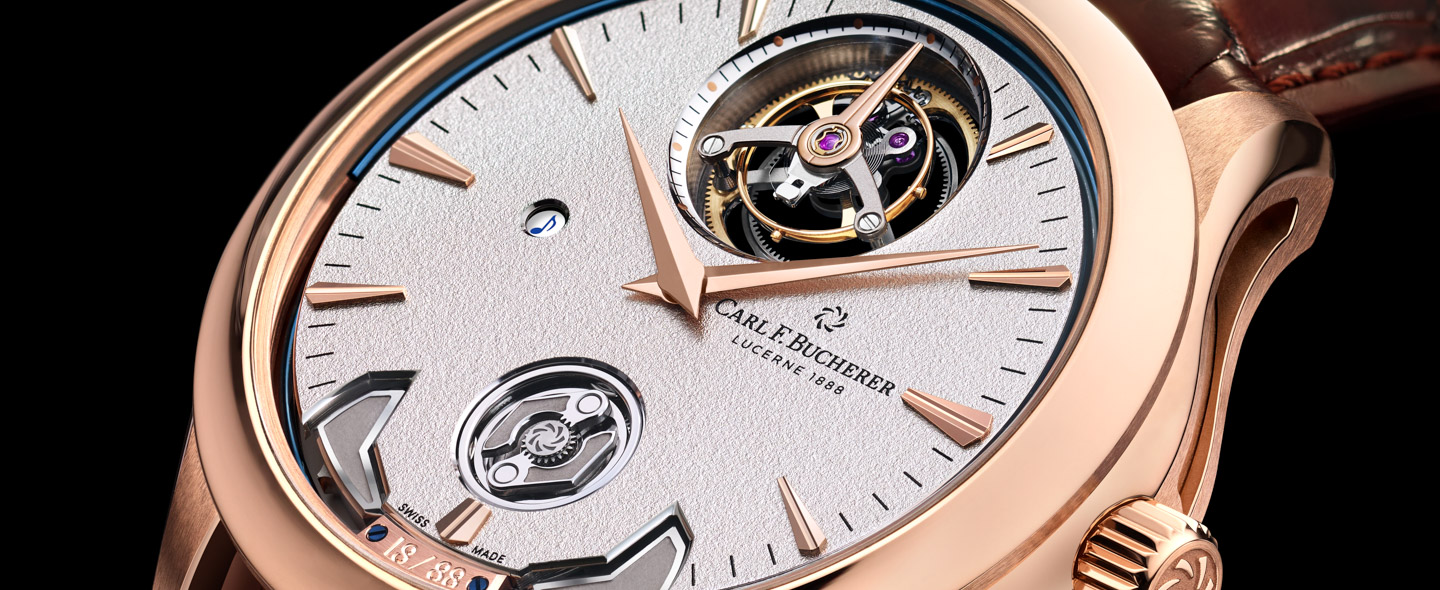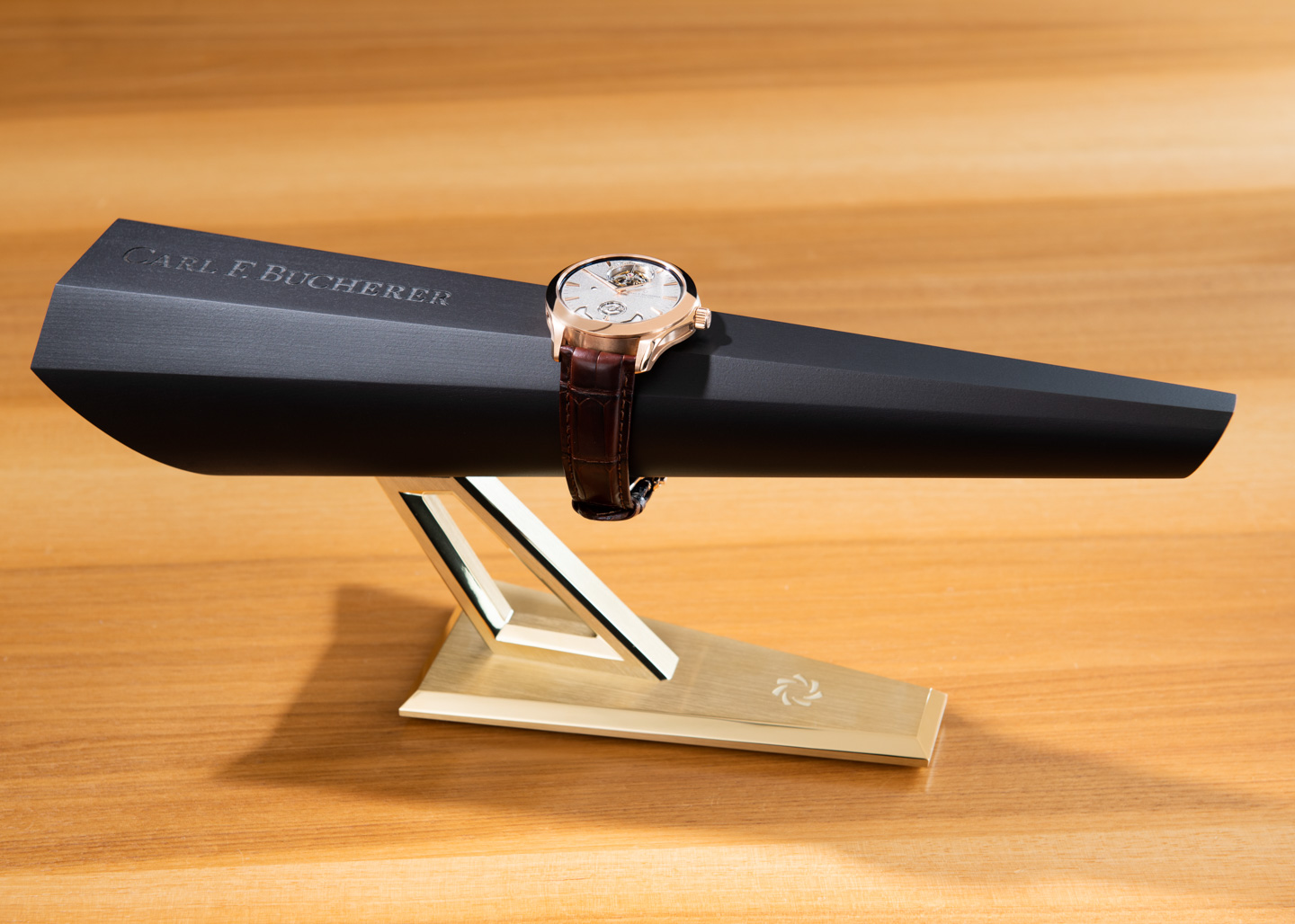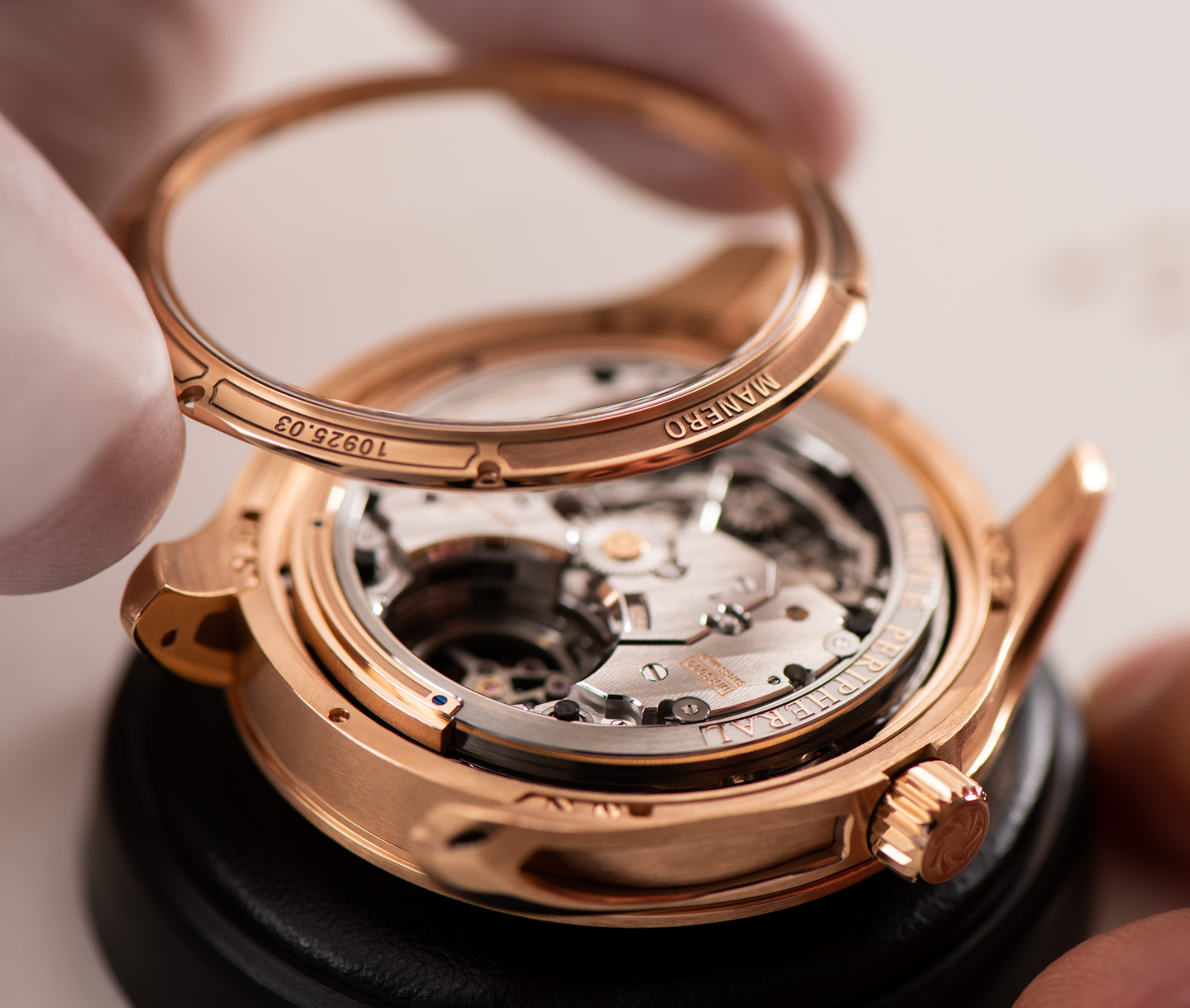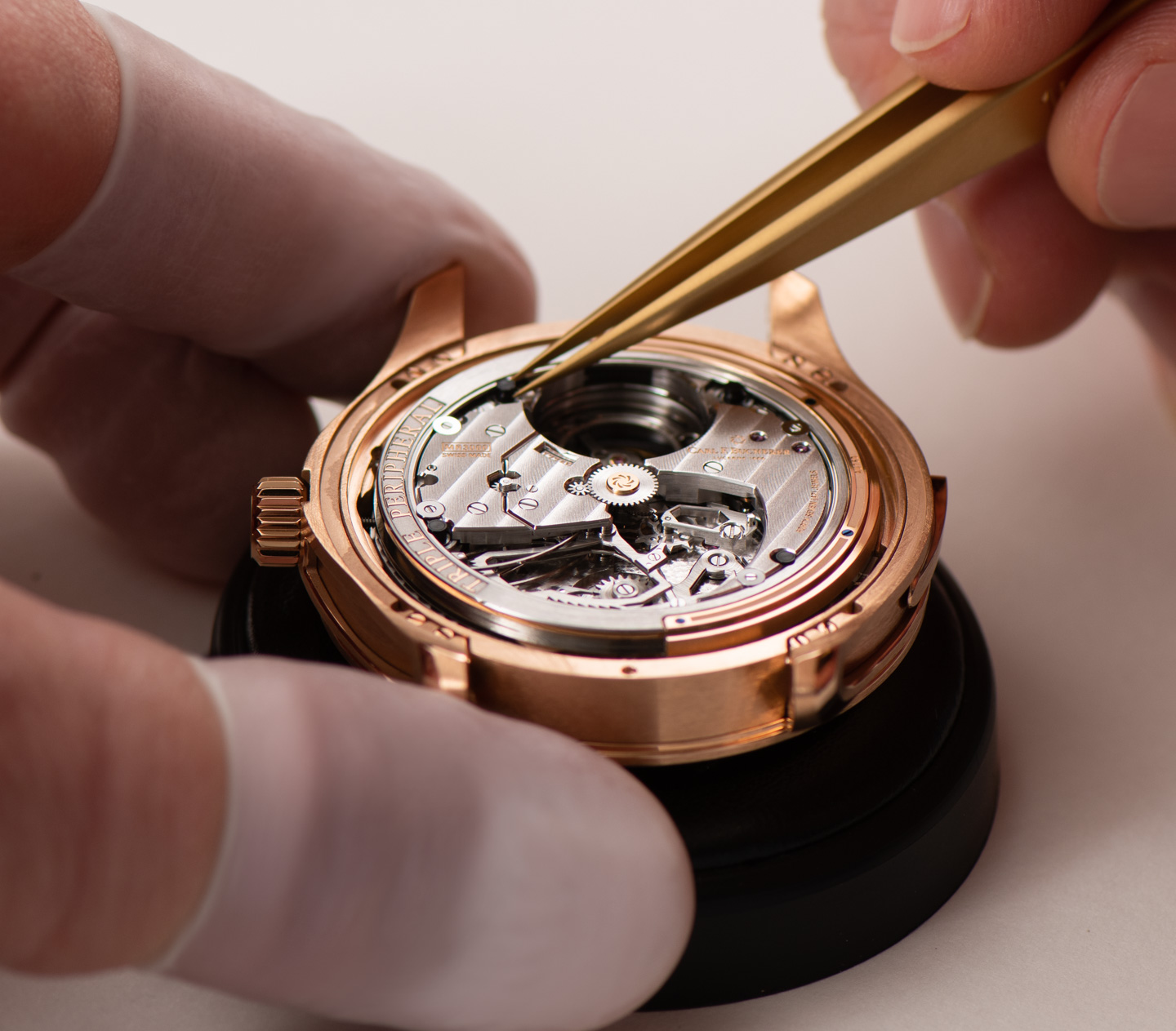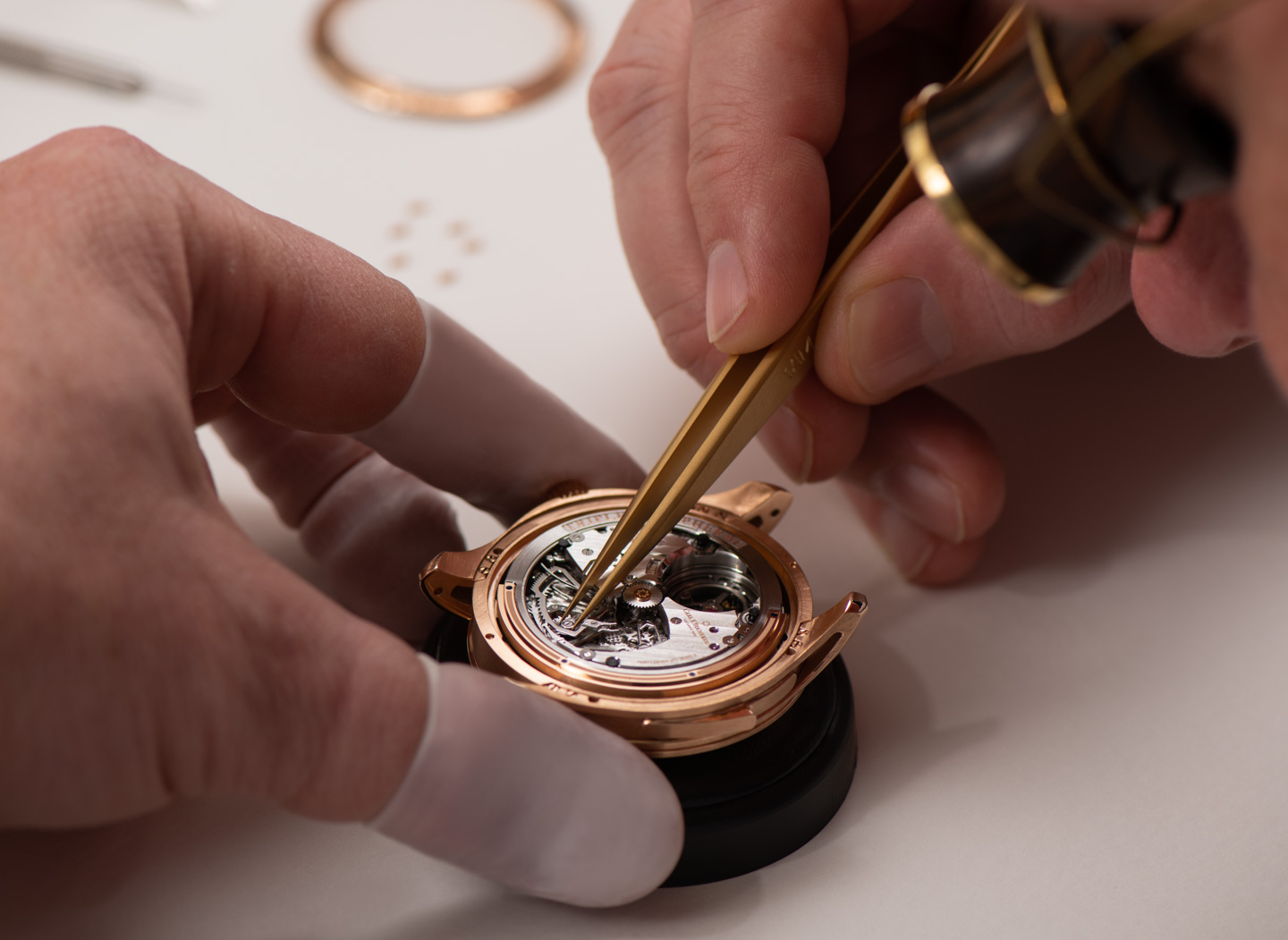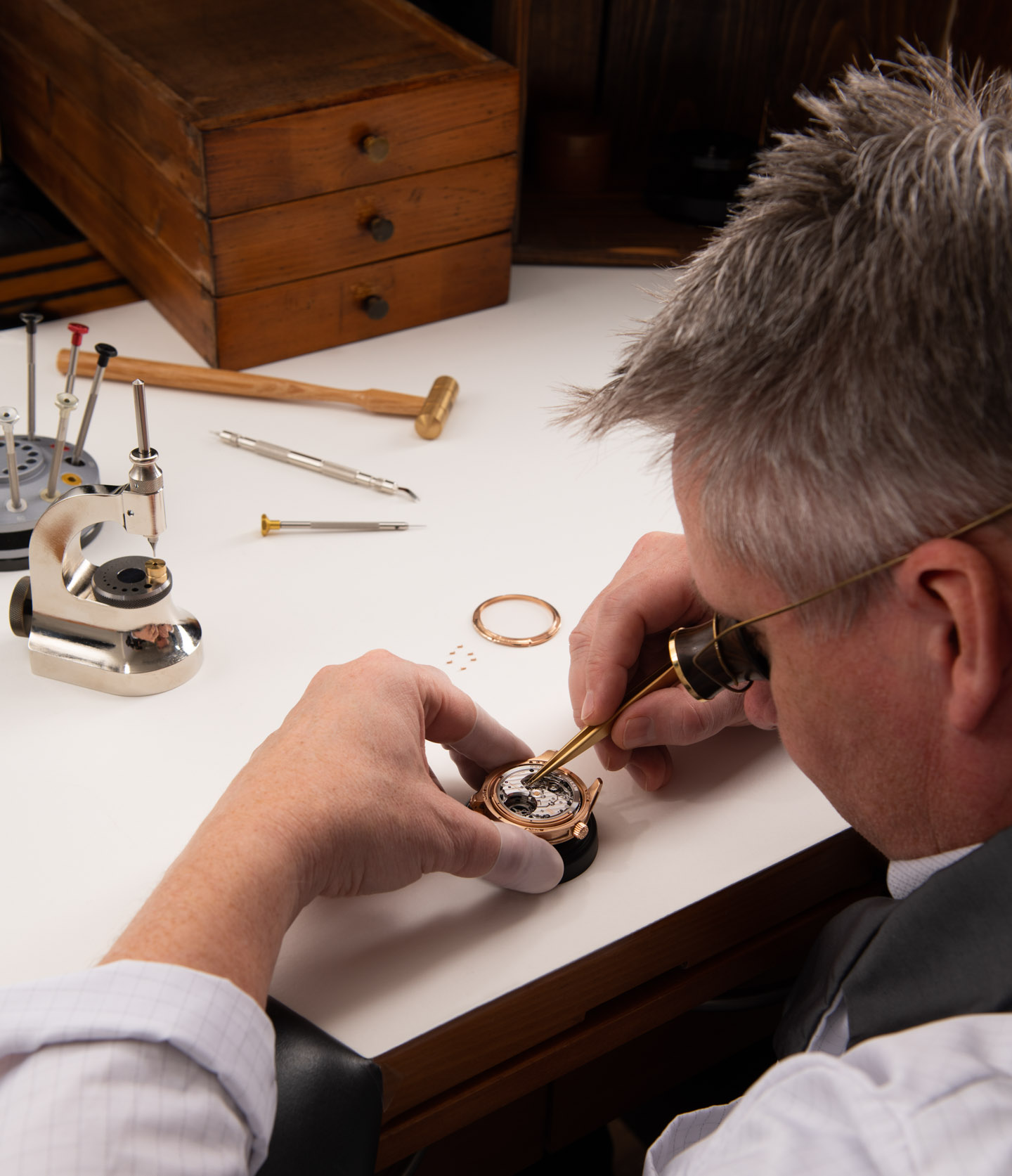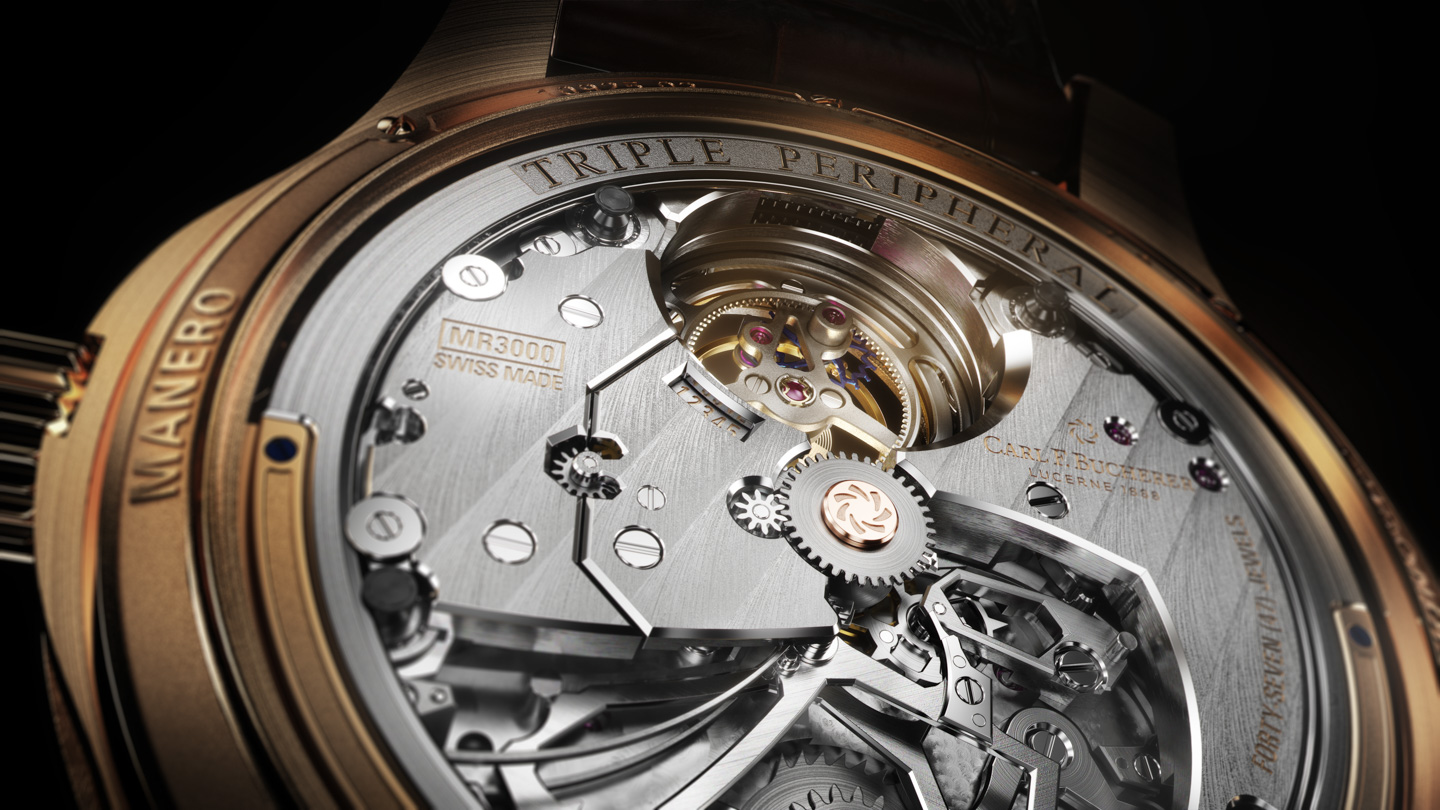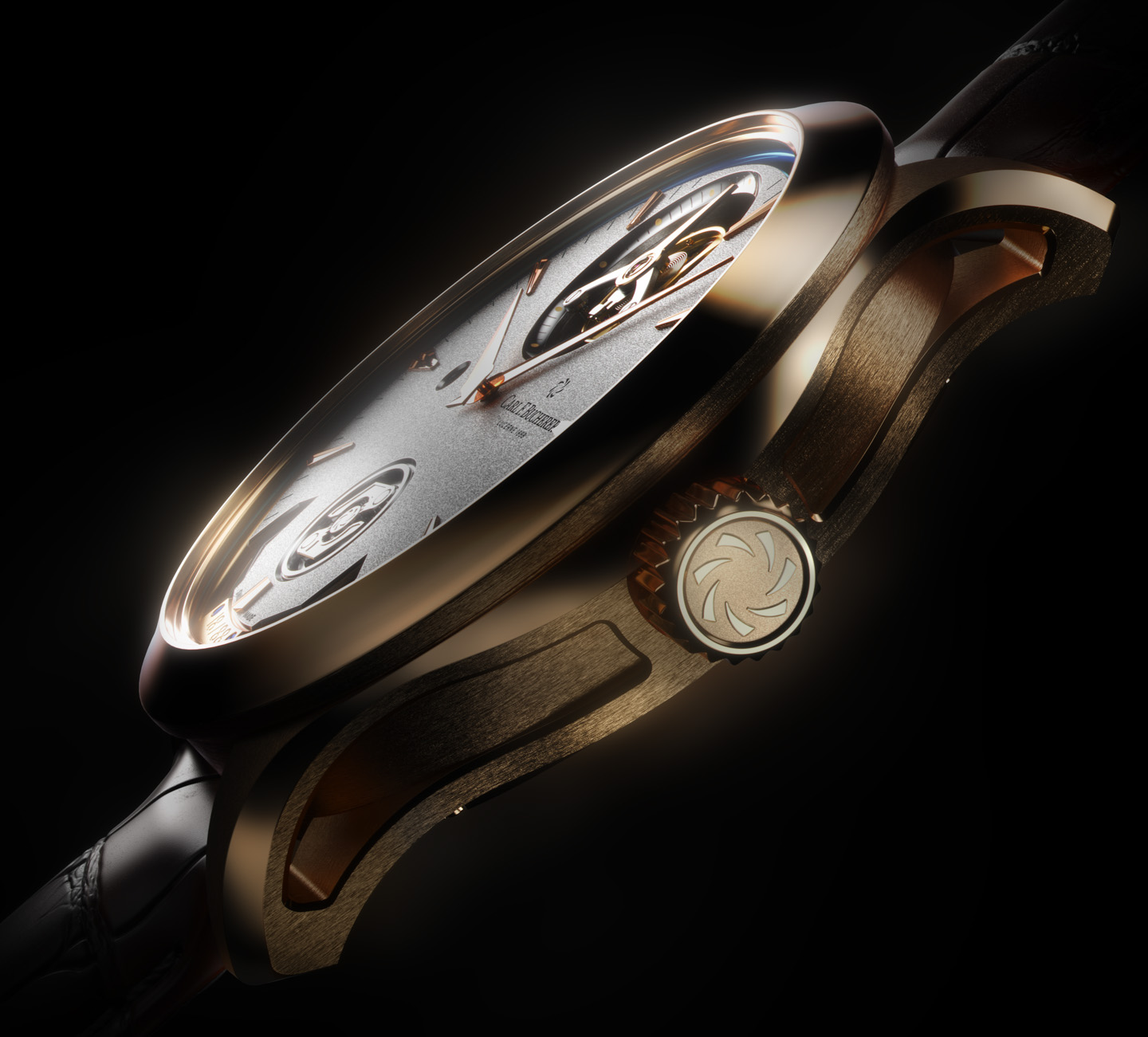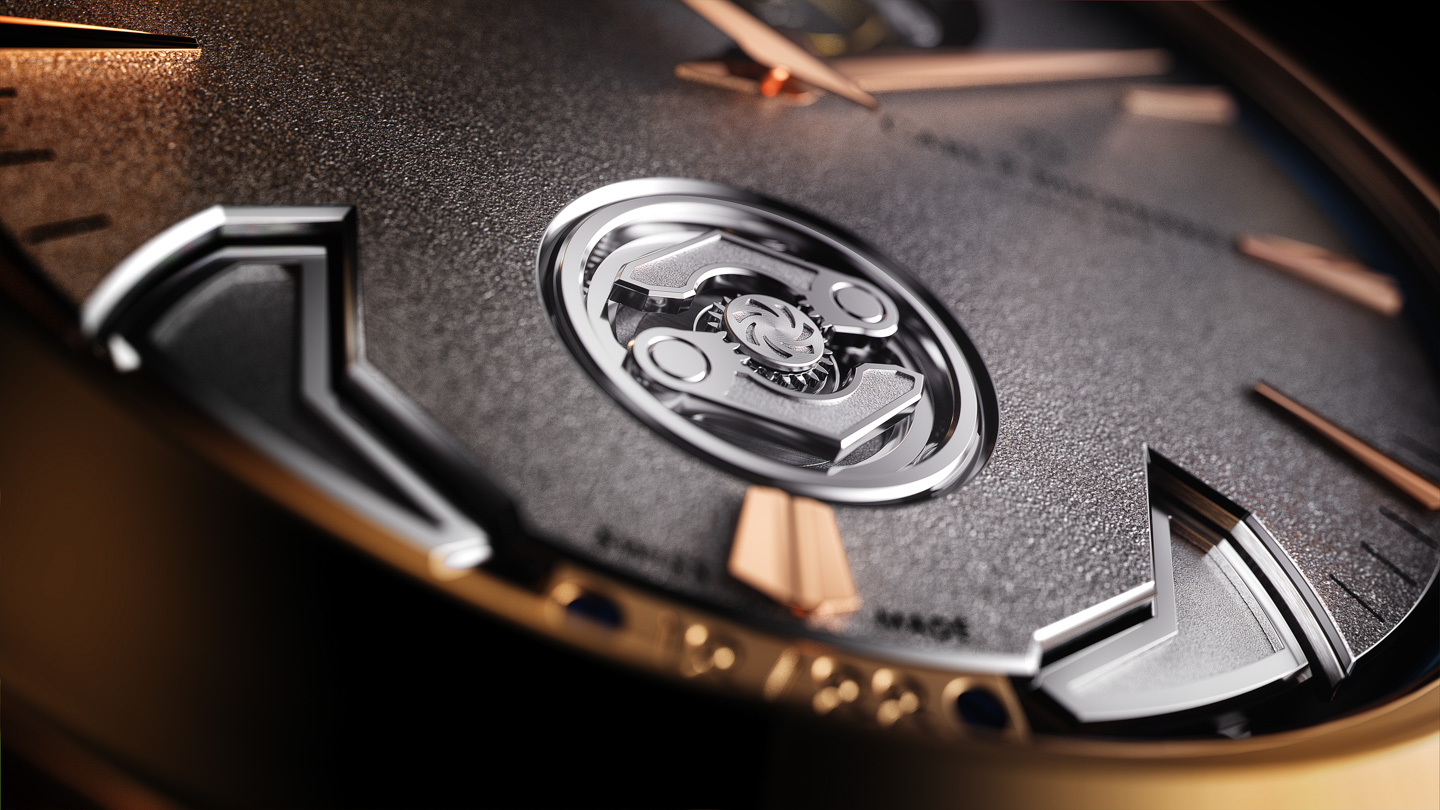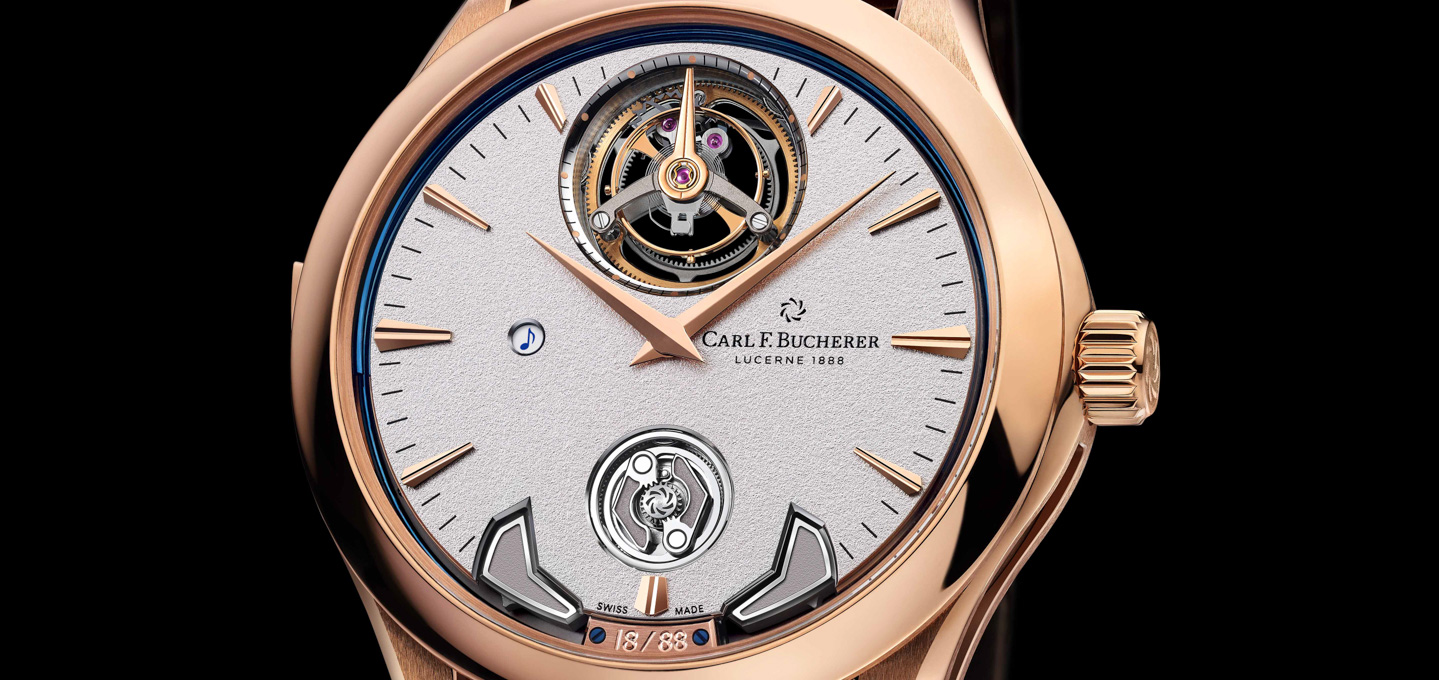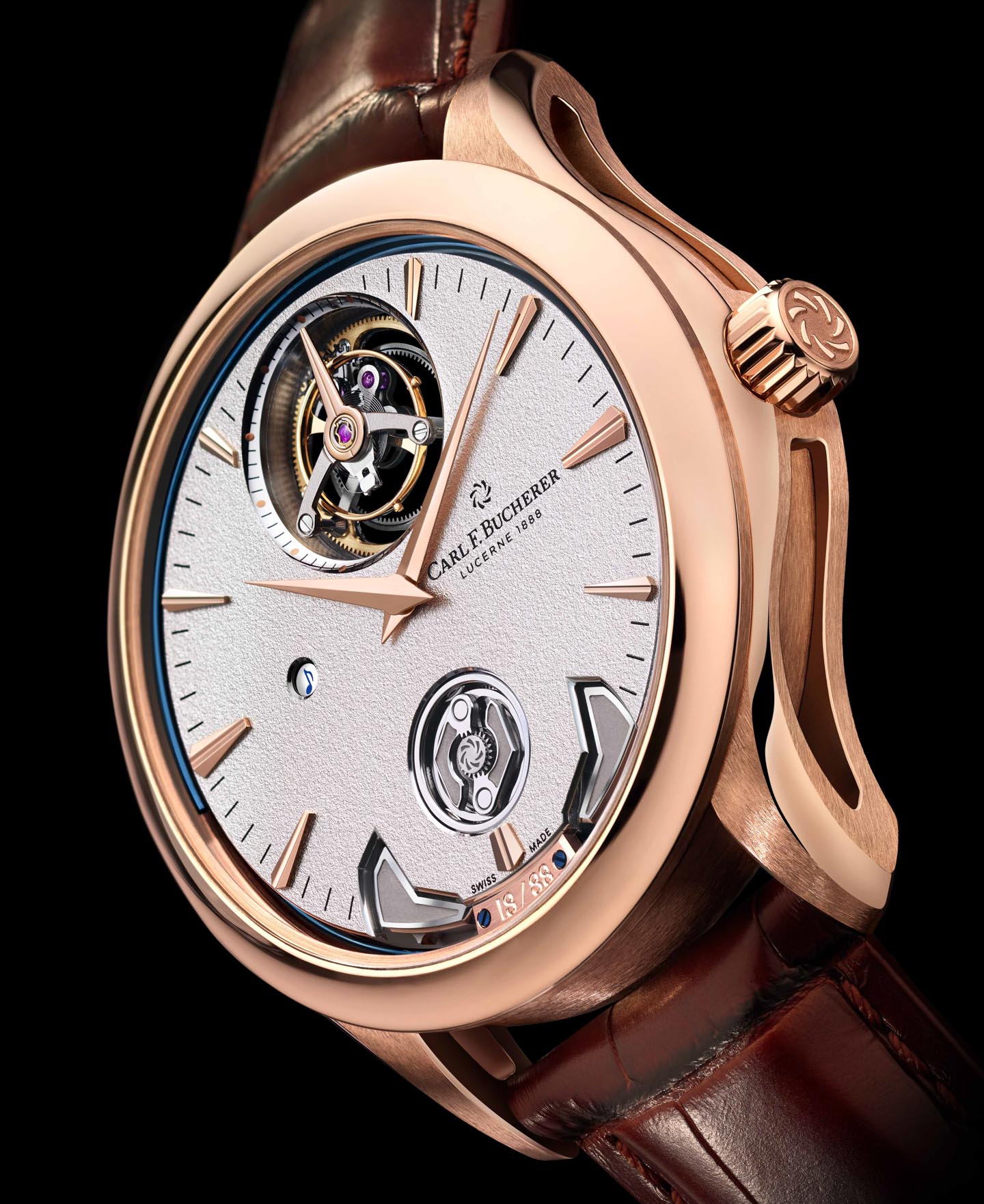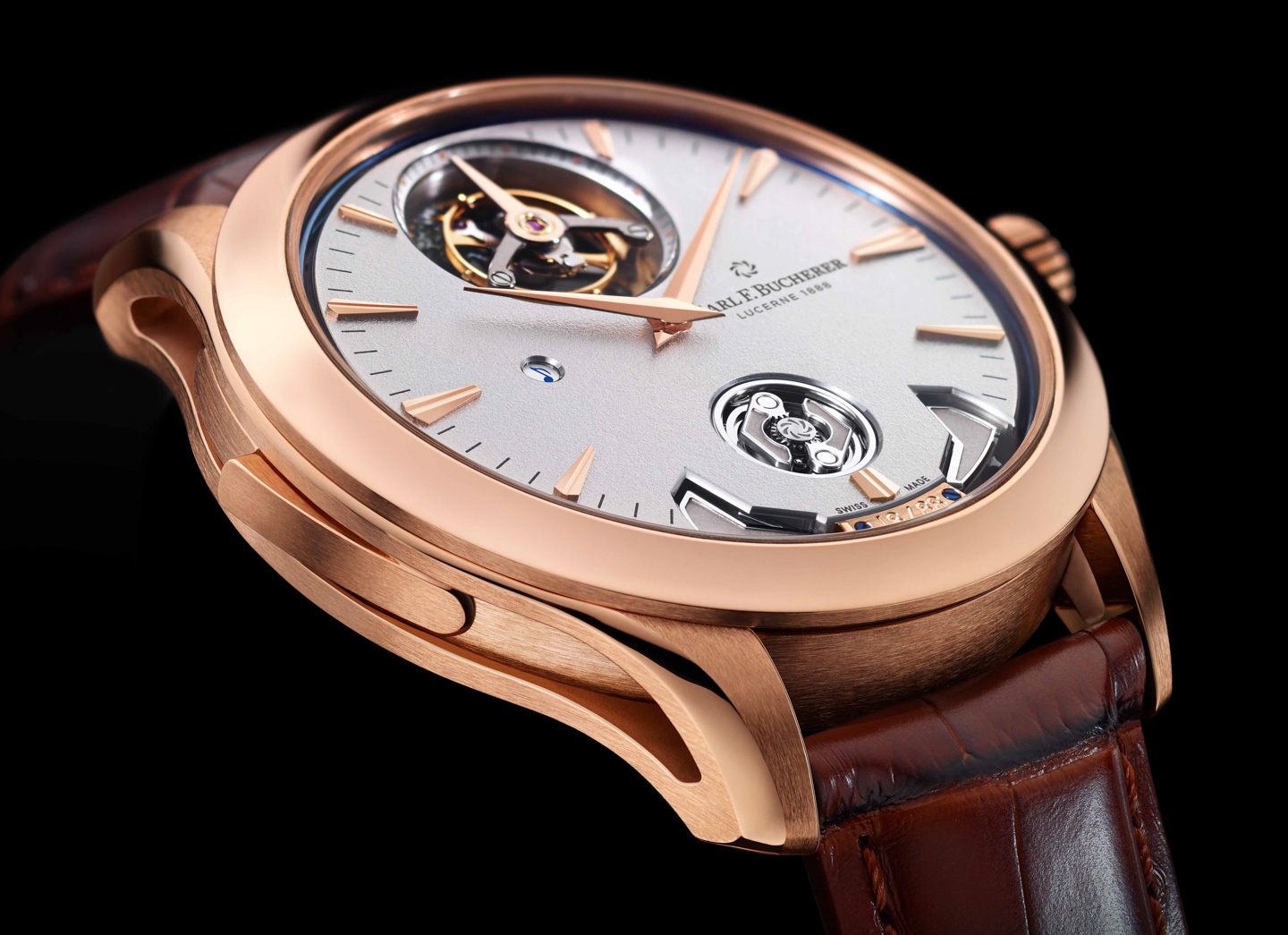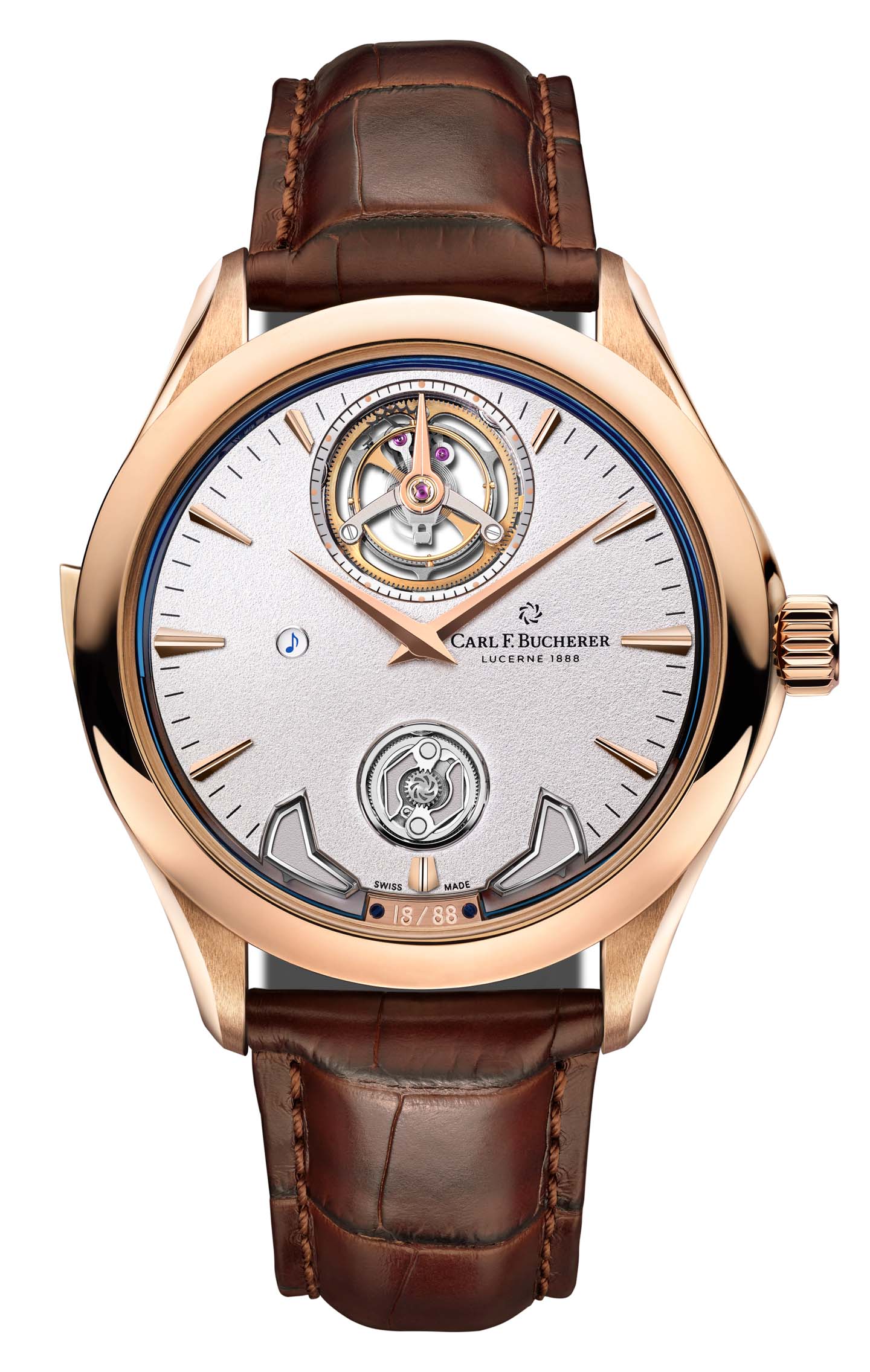
One of the most technically spectacular watches to debut at Watches & Wonders 2021 is this novel limited edition minute repeater from Swiss Carl F. Bucherer known as the Manero Minute Repeater Symphony. Attractive, with looks that blend the classic and modern (in true Carl F. Bucherer fashion), the Manero Minute Repeater Symphony is an understated luxury watch for those who appreciate a good song on their wrist.
Carl F. Bucherer even worked with a Swiss composer to create a unique musical composition to go with the new timepiece as part of its marketing push. Watch hobbyists will probably be more interested in the movement, which is the novel in-house-made Carl F. Bucherer caliber MR3000. The movement features three “peripheral” elements — including the automatic rotor, the tourbillon case, and the minute repeater’s regulation device. By “peripheral,” I think Carl F. Bucherer means “on the outside” and visible. Otherwise, there is no particular technical advantage for something to be peripheral or internal. That said, the peripheral automatic rotor is probably the most interesting peripheral element because of how it is designed.
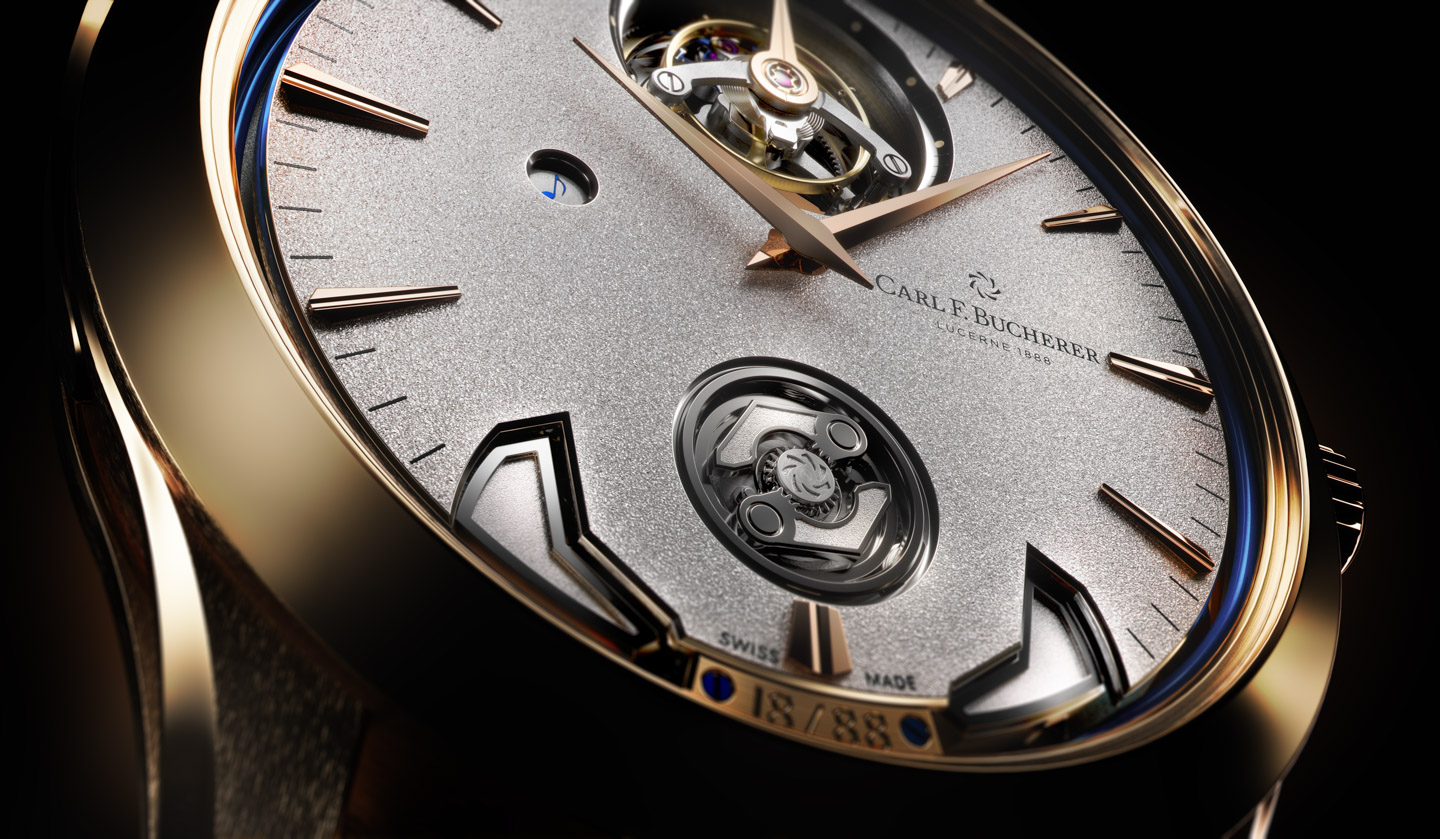
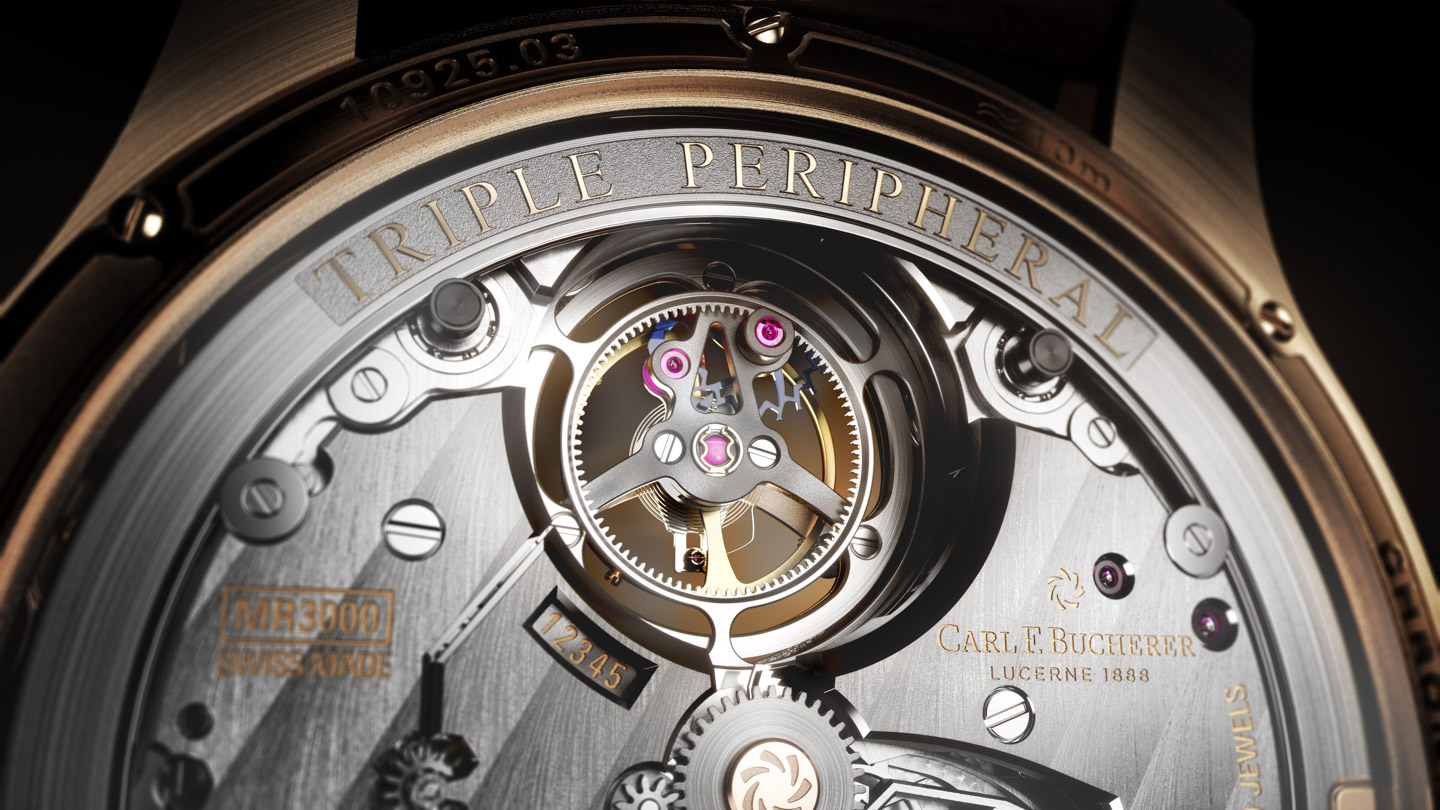
You’d be forgiven for not realizing at first glance that the MR3000 is an automatic movement. Starting with the A1000 movement over a decade ago, Carl F. Bucherer has been fitting a lot of its watches with automatic rotors on the outside periphery of the movement. This allows the wearer to visually admire the beautiful mechanical movements while also receiving the convenience of an automatic winding system. The 22k-gold rotor is visible through the caseback and is part of the many areas of the movement that will help make this horological creation special for consumers.
The MR3000 movement also features a flying tourbillon (located at the 12 o’clock position on the dial), along with a dual note (two sounds) minute repeater system. The movement operates at 3Hz with a power reserve of 65 hours and is also special in that the tourbillon has a stop-seconds function and is mounted on a few small ceramic ball bearings (to reduce friction and increase operational stability). Carl F. Bucherer was serious about making the MR3000 practical as well as attractive, so it is nice to see that the company has certified the accuracy of the movement by giving it a trip to COSC in Geneva for Chronometer certification. My implication is that most tourbillons (ironically, despite the original purpose of a tourbillon) would not pass Chronometer certification — although it is true that Carl F. Bucherer is not the only Swiss company around to pride itself on accurate tourbillon-based timepieces.
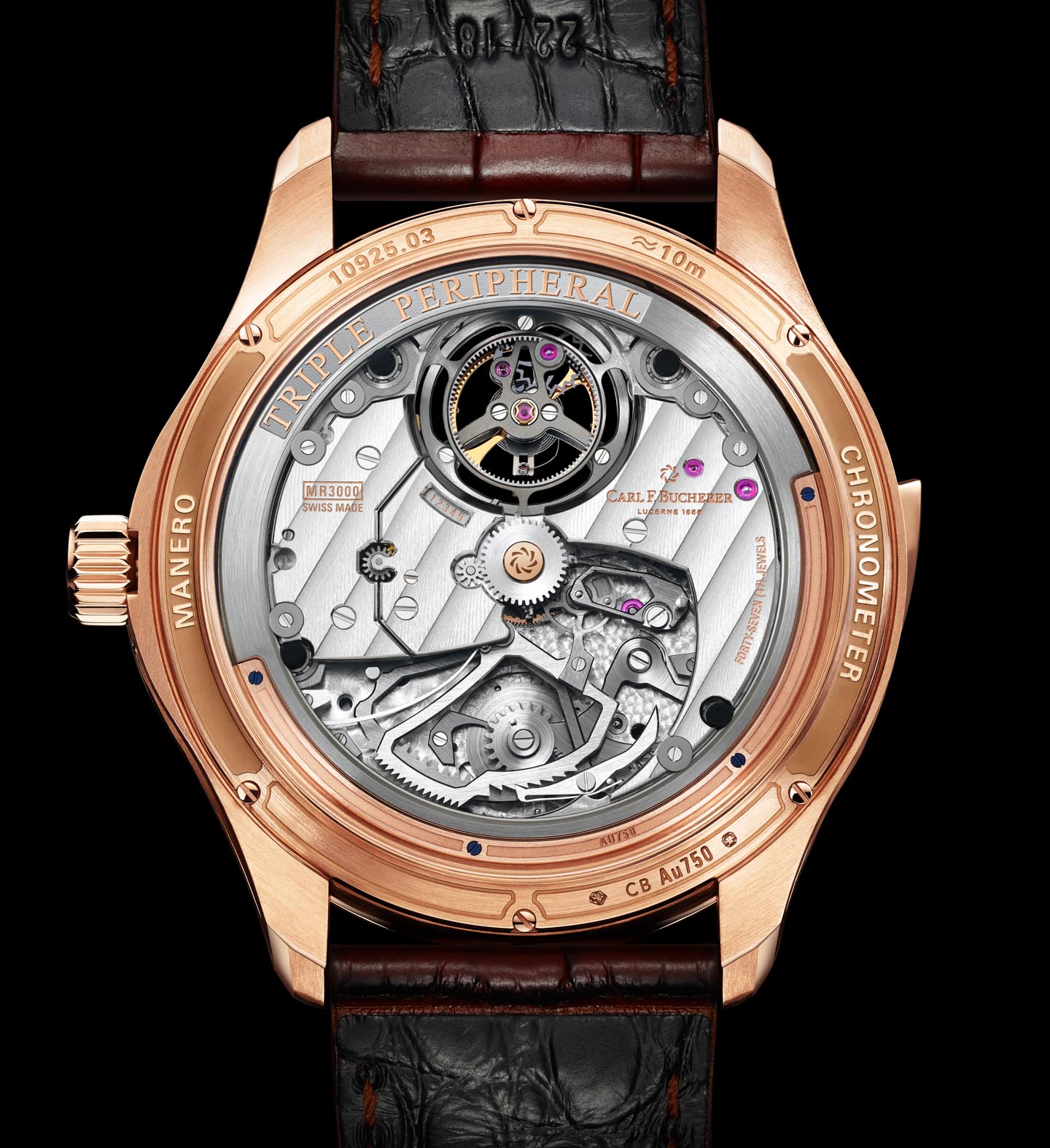
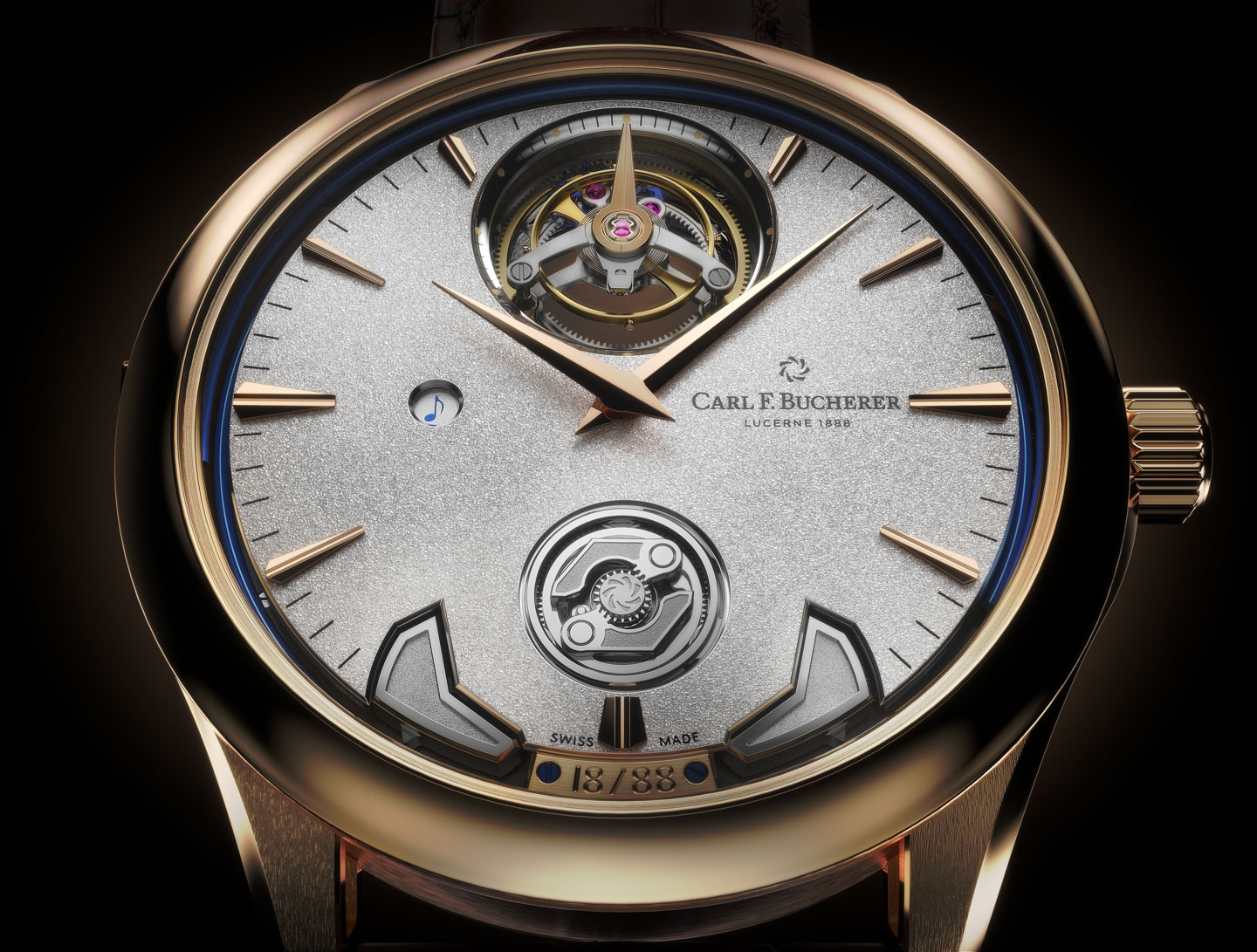
The pictured Carl F. Bucherer Manero Minute Repeater Symphony watch case is in 18k rose gold with an 18k white-gold dial and 18k rose-gold hands. This is actually just one execution of the Manero Minute Repeater Symphony available. Given the limited production and exclusive pricing of the watch, Carl F. Bucherer will, more or less, make each Manero Minute Repeater Symphony watch to order with available customization (materials, colors), as the consumer likes it. The case is 43.8mm-wide and just 12.47mm-thick.
The case is lightly water-resistant, but this is always a tradeoff when it comes to minute repeater watches. Modern watches have entirely sealed-up cases to protect against things like dust and water. Minute repeater mechanisms produce musical chimes via the gongs and hammers inside the watch that need to exit. While there are examples of minuter repeaters actually using the case as part of the sound creation system, most of the time, the more water-resistant a watch case is, the lower the perceived volume of the minute repeater while it is in action. In this instance, I believe that Carl F. Bucherer is choosing sound volume over environmental resistance, which is probably a wise choice when wanting to impress collectors with a novel minute repeater-based watch.
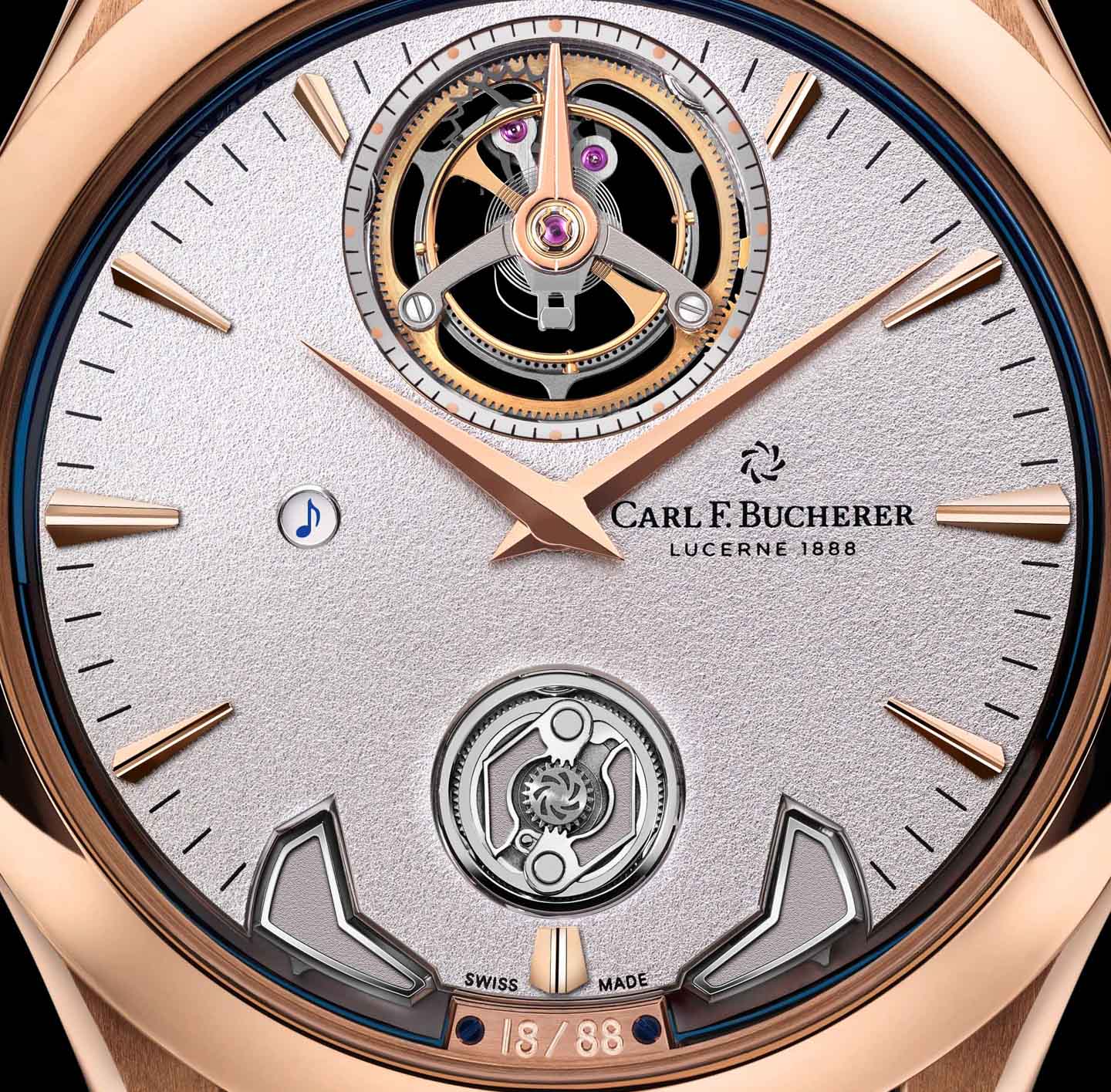
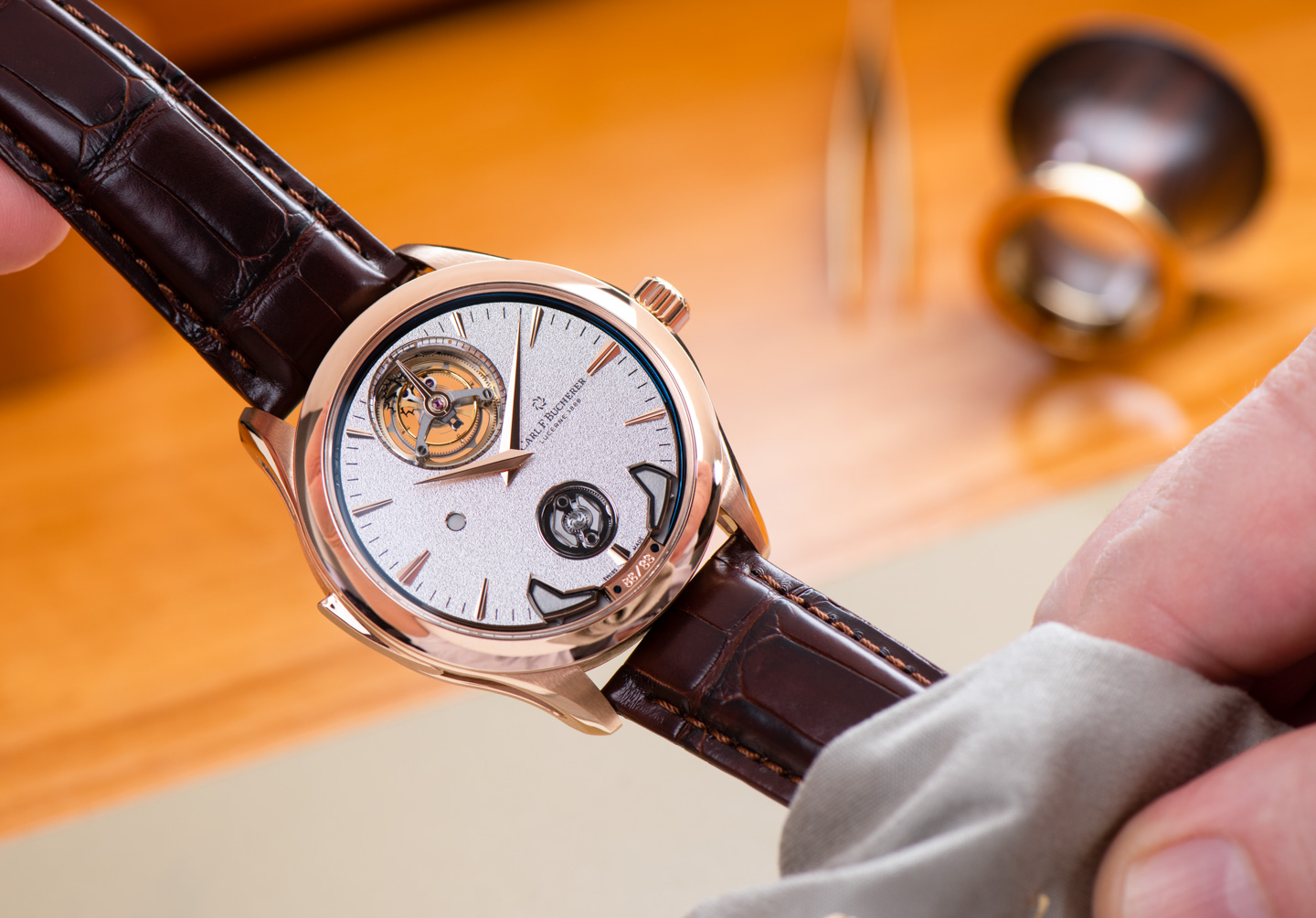
Historically speaking, minute repeater watches were valued because of their ability to “repeat” the current time back to the wearer in audio form. Today, minute repeater watches are among the more elaborate and luxurious complications a timepiece can have. They are art and culture as much as they are technology. One of the additional interesting design elements of the MR3000 movement is how the minute repeater’s regulation system is placed at about 6 o’clock on the dial. This system is like a brake, and it uses resistance to set the “speed” of the minute repeater when it is operating. The entire mechanism should spin when the minute repeater is activated using the sliding level on the side of the sculpted watch case.
Also on the lower part of the dial are the exposed hammers that are designed to hit small, coiling gongs inside the watch movement. These hammers hit the gongs to produce the chimes, which together make up the minute repetition system output… or what Carl F Bucherer might refer to as its “symphony.”
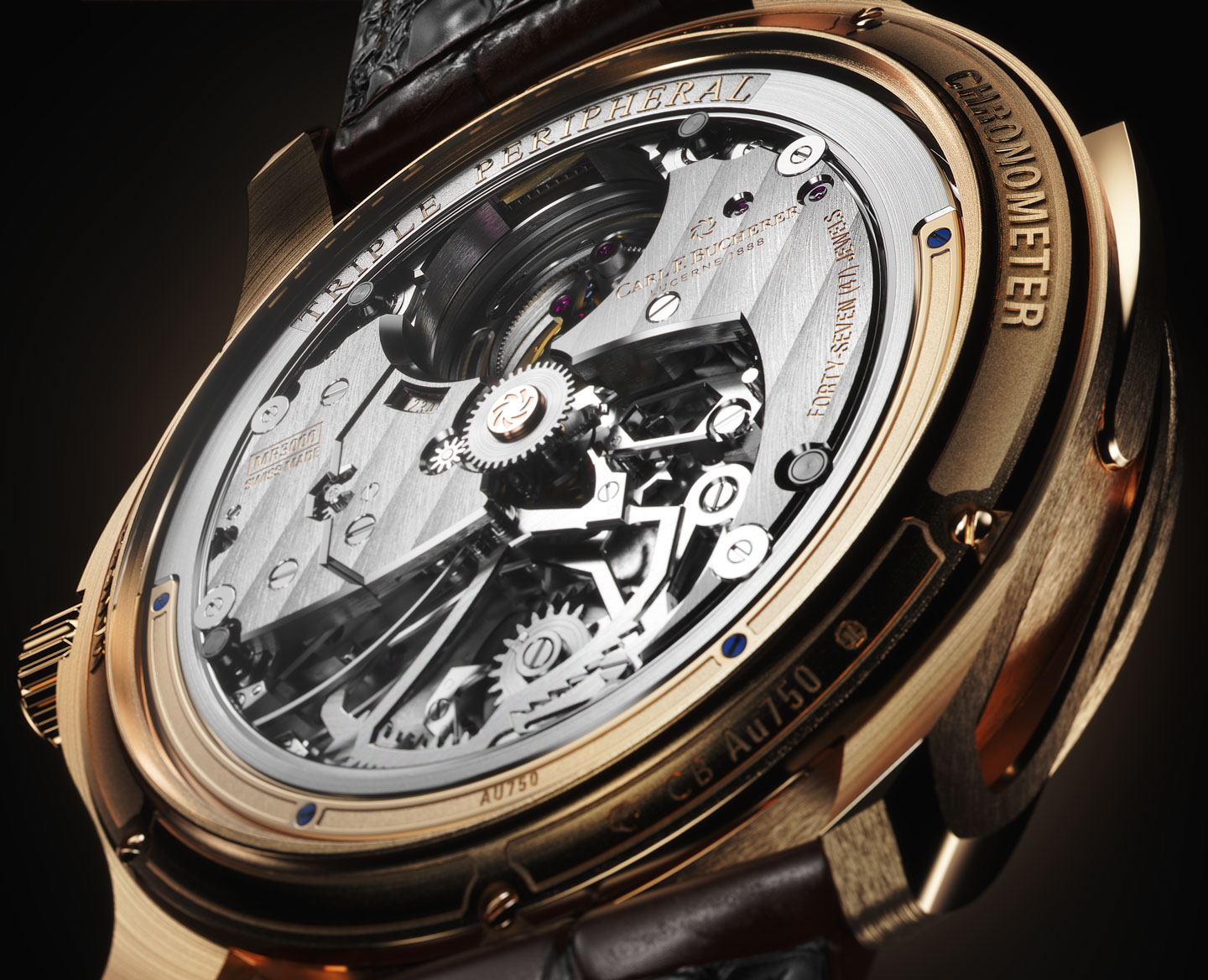
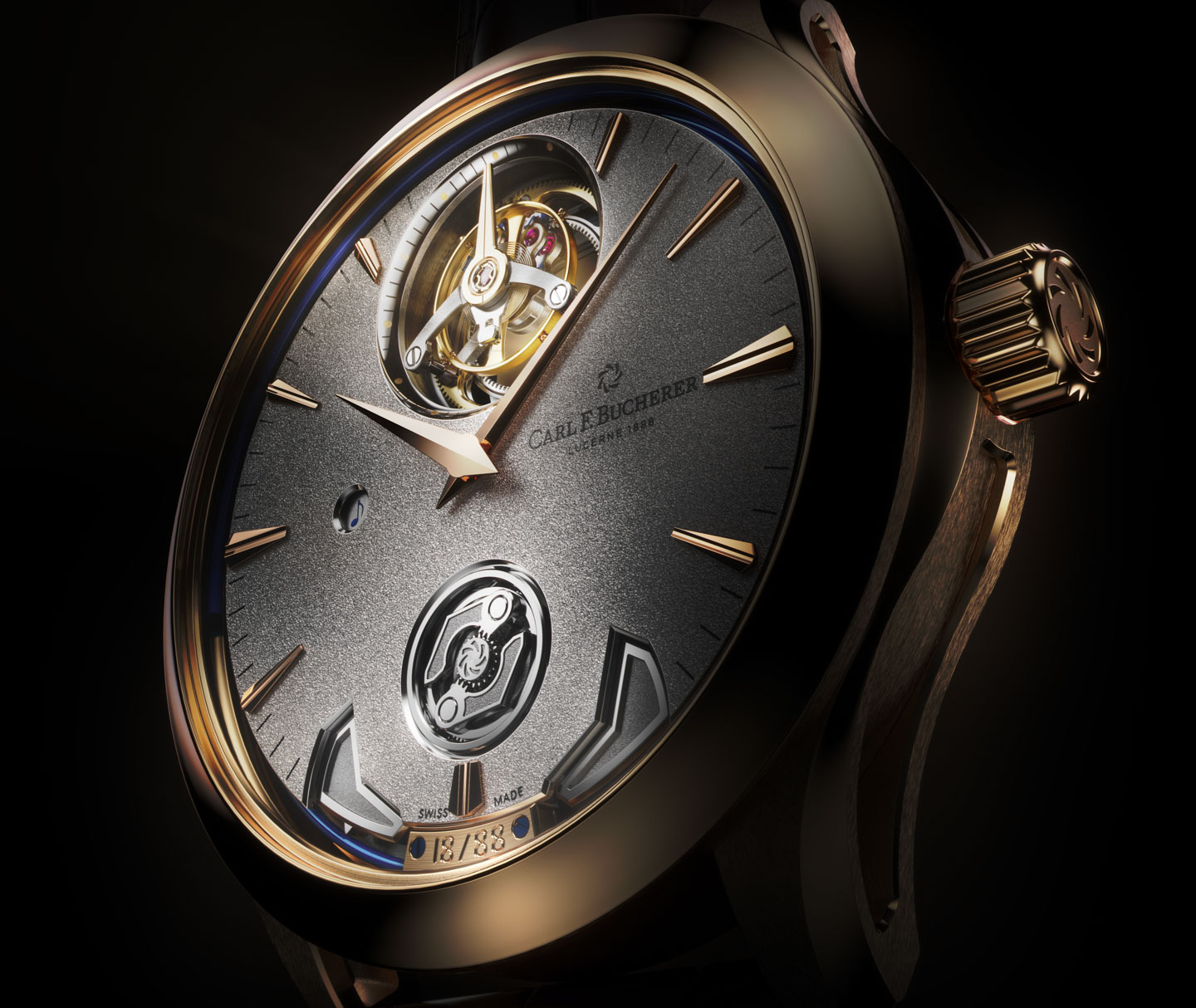
The final movement feature is one that any collector will appreciate — a safety mechanism. Minute repeater systems are inherently fragile, and it is not possible to make certain adjustments to the watch while the minute repeater is in operation. Thus, a small window on the dial of the watch at 9 o’clock shows the user whether the crown is out (or pressed in). When out, the minute repeater is blocked and not able to be used. One of the most compelling features of many modern minute repeater watches like the Manero Symphony are these safety mechanisms, which are truly user-friendly and important to prevent easily avoidable mechanical damage.
In a lot of ways, the Carl F. Bucherer Manero Minute Repeater Symphony is a daily wear minute repeater. The size, style, and features lend themselves well to practical, conservative wristwatch-wearing, while the mechanism inside is truly lavish and exotic. Carl F. Bucherer will produce the reference 00.10925.03.63.01 Manero Minute Repeater as a limited edition of 88 pieces. Price is $399,000 USD. Learn more at the Carl F. Bucherer website here.

